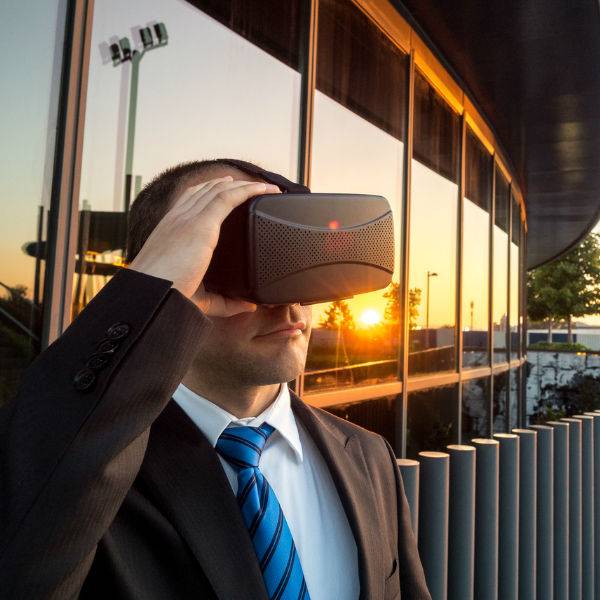VR is more than a game
26 January, 2017 Reading: 3:41 mins
Senior PR Executive, Danni Amos, reflects on her VR experiences over the past couple of months and the implications there are for businesses.

As my previous blog posts have alluded, VR is something I am passionate about and I’ve been lucky enough to attend a few VR conferences and exhibitions over the last couple of months.
As someone who has recently worked within the games industry, some of the insights that have been shared at these events have been unsurprising to me. The games industry is leading the way within the technology but the user experience still leaves a lot to be desired. The market is offering too many options, so consumers and enterprise alike are struggling to know what configurations will best fit their needs.
However, what really has struck me was the enterprise applications for VR and AR. In his opening speech at Immersed in the UK: The VR opportunity, Jeremy Dalton of PwC, highlighted a number of areas where the technology could have a profound impact on the way we consume media and interact with the world. Imagine a history lesson where you sit as the co-pilot of the Apollo 11 mission (which Jeremy has been lucky enough to experience), or a news report that allows you to walk through and see a war-torn country.
However, it is two particular businesses that have stood out in my mind.
Medical Realities
Steve Dann, co-founder for Medical Realities, has always spoken passionately about the problems facing trainee surgeons around the world, and how VR could be utilised as a training tool to combat this.
He highlights that surgeon training hasn’t changed significantly over the past 100 years, with students still working in a one-on-one environment and learning from textbooks. This method is time-consuming for both student and teacher and ultimately is not sustainable. Medical Realities wants to revolutionise how surgery is taught by giving students “access to first class surgical training regardless of physical location or financial situation”. Rather than one surgeon training one student, the technology has now evolved to allow that same surgeon to teach multiple students in different locations around the world.
They have already demonstrated the power of this technology last year with the first livestream of an operation using 360 video. The livestream itself had over 54,000 live viewings, who included the family of the patient. The stream was watched in 142 countries and over 4,000 cities around the world. The video has since been put up on YouTube, where it has gained over 150,000 views!
Medical Realities has continued to innovate and has developed this further into the Virtual SurgeonTM, a tool which combines 360 video, 3D and interactive content. It puts the user inside the operating theatre overseeing an operation through the eyes of the consulting surgeon.
Luminous
It’s not just Medical Realities who is doing interesting things with VR and looking at how to use it in business. Luminous is pioneering the use of 3D technologies to provide VR and AR solutions to enterprise.
It has been providing innovative turnkey solutions for nearly 20 years. The company has a robust roster of case studies and have a dream client list that features Jaguar, Google and English Heritage. It has created a wide range of VR solutions, ranging from experiences designed for site and asset familiarisation of drilling vessels and rigs, to creating real-time interactive virtual reality tours of new-build terrace houses.
But that’s not all
These are not the only opportunities out there. Due to the prohibitive cost and space requirements, VR might never make it into the home environment. However, it could become a cinema experience where you are no longer a passenger in the narrative journey, but a fully-fledged character that can interact with the world around you. Human beings crave immersive experiences, and they’re only set to become more immersive with the developments of the omnidirectional treadmill, which allow the user to walk around the space. Tesla is also working on a haptic feedback suit, which will allow you to touch and feel within a VR environment.
The feeling I have been left with is a cautiously optimistic view of the VR industry. The technology isn’t quite fulfilling consumer expectation just yet. However, the gaming industry is well on its way to ironing out the kinks and once it succeeds, there’s a bright exciting future for VR with wide-reaching implications for business, education and entertainment alike.